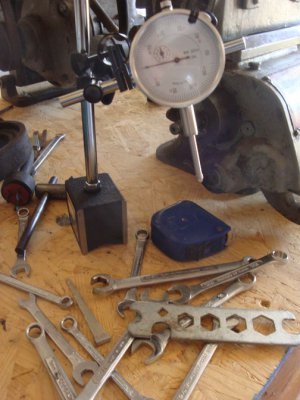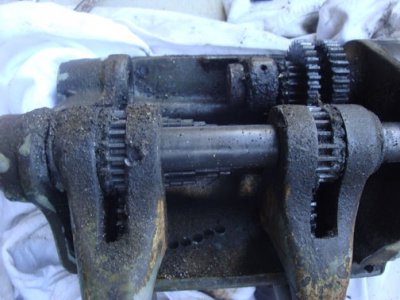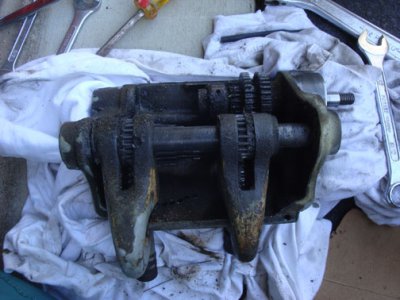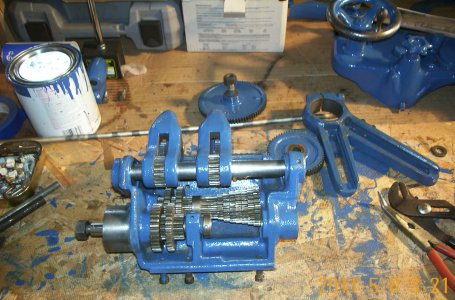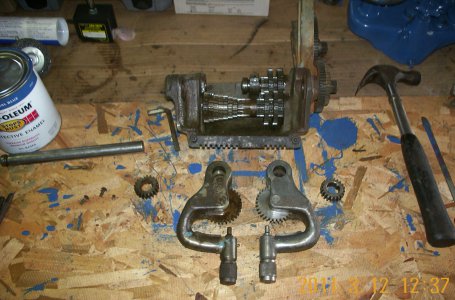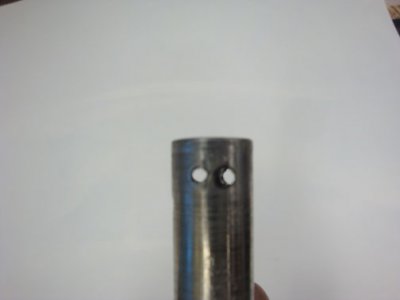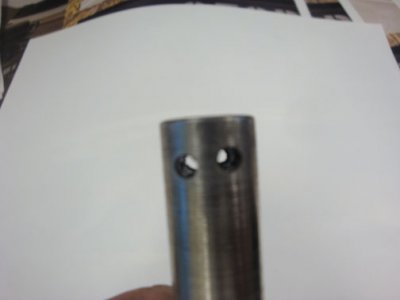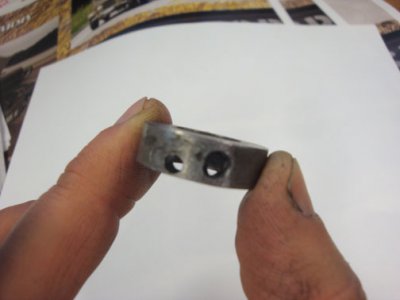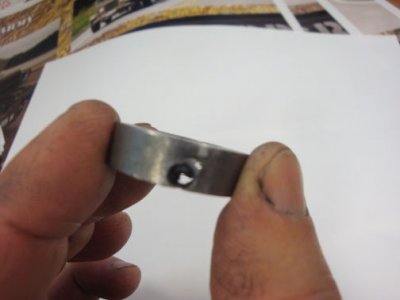Hi pjf134,
Nice looking gearbox. Stupid question time. I see you painted yours (and nice job, btw). For those not painting their lathe and have large areas where the paint has come off, will this make the metal more susceptible to rust or should one put a light coat of oil on this metal (similar to seasoning a cast iron pot)? The only problem is it might attract more dust unless you use a dust cover.
Is my logic on this tracking?
On your gear shaft, the taper pin is not completely round so it might have gotten whacked in the past.
-----
OK, 10-4, your tip on left and right tumbler arms, INVALUABLE! Didn’t know about this. Fortunately, I’ve taken photos (see attached) of the entire process and by the paint signature, I can see which will be right and left during assembly. I’m fairly certain the book I’m reading doesn’t mention not mixing them up (it only states not to confuse the gears, but I think the gears are interchangeable right and left? Come to think of it, after looking at the photos, it appears that the shape of the R and L tumblers are different? See how it pays to take photos during the entire process!!!
It also helps, I've found, to have different buckets. For example, in one bucket is the reverse assembly and in another bucket is the gearbox assembly. I've been doing some internet surfing and am finding out that a lot of people who buy used lathes see broken teeth on gears. I was curious what causes these teeth to break. Perhaps incorrect assembly or not putting a gear lever down all the way (not properly engaging gears), or perhaps locking the gears and removing the chuck, which stresses the gears? Anyway, it would be good to know to avoid this from happening to me!
I’ll try my hand again at removing that stuck taper pin sometime this week or weekend, but will make a trip to hardware to get some taper pins and taper drills. Might need, sure I need, to increase taper pin diameter if I ever get that taper pin removed! I still think set screws would work better but you’all have advised against it so I’d rather listen to experience than go it alone.
I did sometimes wish I had a few extra hands. My wife, btw, was furious at how dirty my hands got and told me to wear latex gloves next time, which is kinda girlish, LOL
Small ceramic heater? I think you lost me there.
Oh, btw, I'm going to pick up some pipe cleaners. If I ever get this gear box dissassembled, I can see where they'd come in handy for cleaning out those hidden oil passages. Did I mention the gearbox resembles an object filled with wormholes.
Hi Phil,
Thanks for the treatise. Among supplies ordered from Harbor Freight is this dial indicator (photo), which I haven’t yet used. I assume it probably works similarly. BTW, I didn’t see the small brass piece in the caliper case.
Someone said that a micrometer is more accurate than a caliper so eventually that will be on my list of things to buy once this lathe is disassembled and then assembled, which will be at least a few months away. LOL
